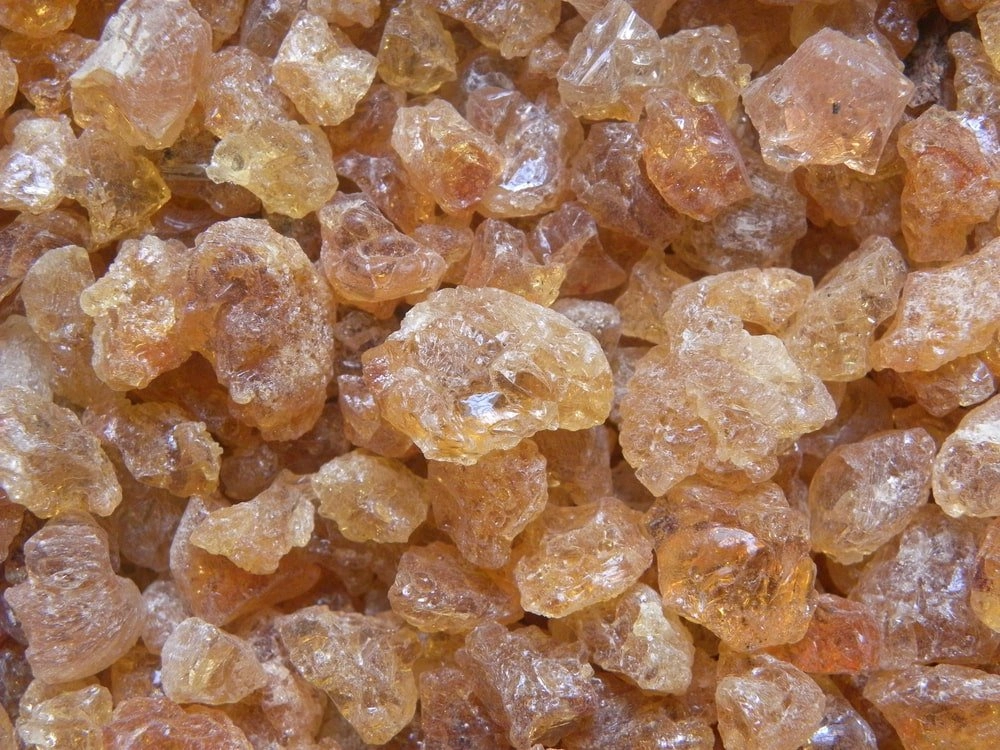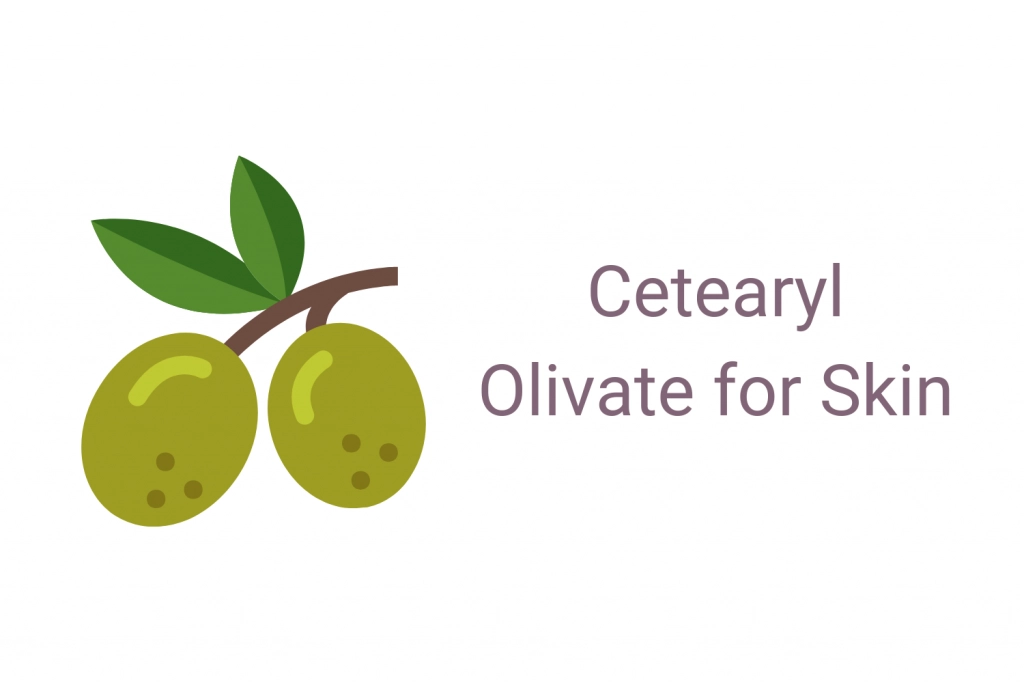Dimethicone is another silicone ingredient that gets a lot of bad publicity. But it’s also in tons of products across many categories. It’s a super useful ingredient in skincare.
This post may contain affiliate links. Read the full disclosure here
This ingredient works well, is cheap to make, sustainable, and offers unique benefits. But it’s a silicone, so does that mean it’s bad?
Not exactly. This ingredient is considered safe to use, it won’t clog your pores, and there isn’t evidence that it hurts the environment. We gave this ingredient a FAIR rating since there are a few uncertainties regarding the impact on the environment. But we don’t believe this is a bad ingredient that you should run away from.
That’s our take, but here’s the information to come to your own opinion.
What is Dimethicone?
Dimethicone or polydimethylsiloxane (PDMS) is one of the most popular silicones in skincare, haircare, personal care, and cosmetics. It’s a silicone oil derived from silica.
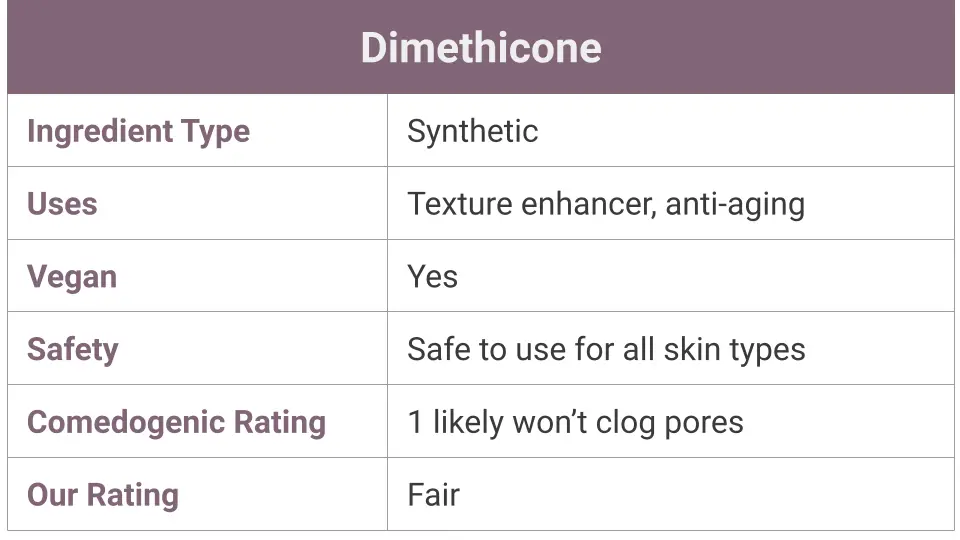
It has anti-caking, emollient, and conditioning properties. In formulas, it also adds slip, reduces greasiness, and provides foam stabilization. Not to mention, it gives provides that smooth silky texture.
Dimethicone Uses For Skin and Hair
Dimethicone is in skincare, haircare, personal care, and makeup products. Silicone ingredients such as dimethicone give products that smooth silky texture. It also helps products spread easily and stay on the skin.
This ingredient is especially effective in foundation, sunscreen, and primers. Since dimethicone doesn’t absorb into the skin it can form a thin layer that keeps products in place.
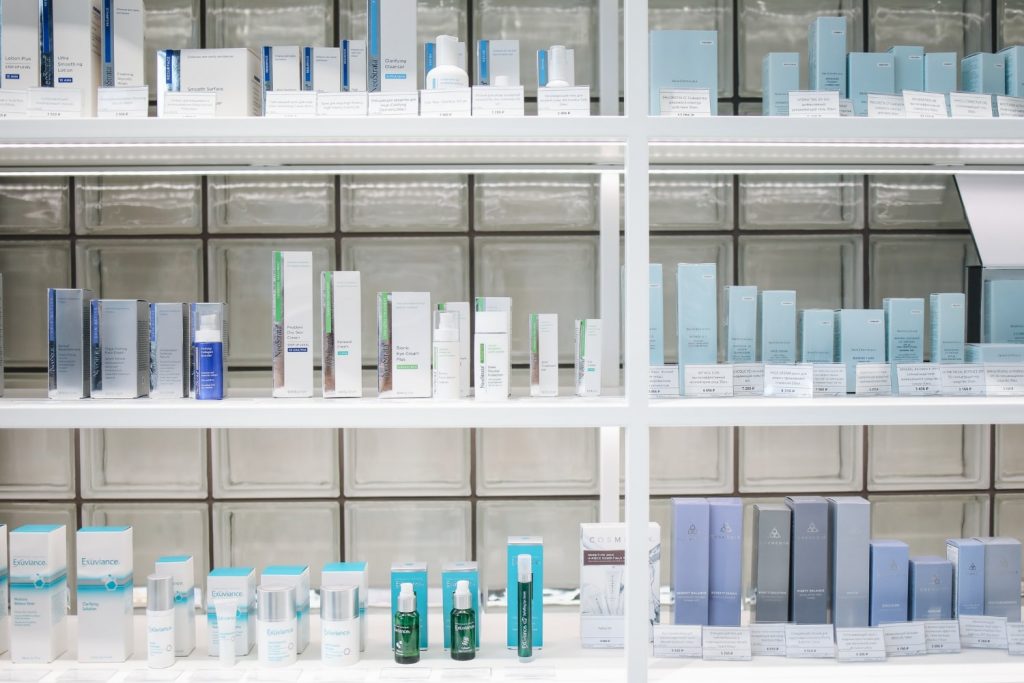
It’s also useful in shampoo and conditioner since it coats the hair to retain hydration, reduce tangles, and improve shine. The protective barrier around the hair helps reduce damage from blow dryers, hot irons, and other hair styling tools. It will also help you avoid frizzy hair in humid or wet environments.
Dimethicone Skin Benefits
Dimethicone gives products a smooth and silky texture without leaving a greasy residue on the skin. It also helps ingredients mix, provides hydration, protects, and fills in fine lines and wrinkles.
There is a reason why dimethicone is in so many luxury anti-aging products.
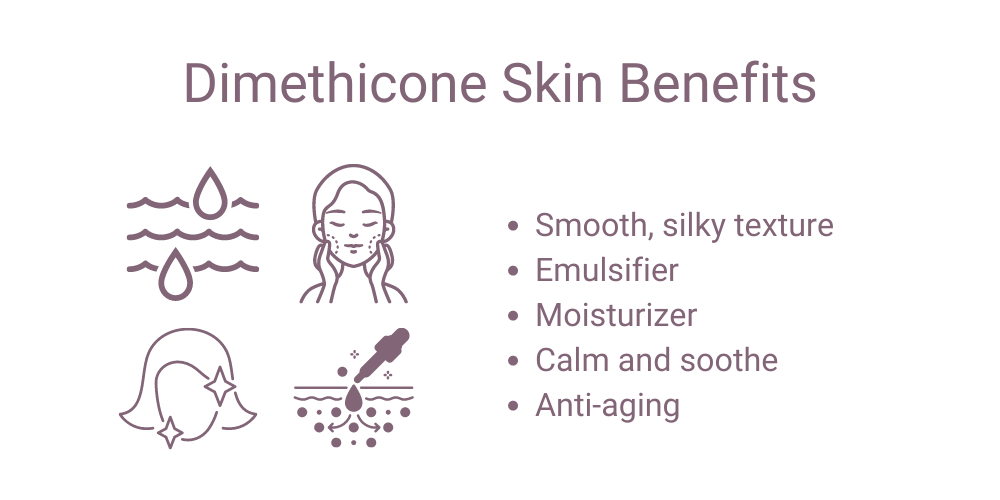
Emulsifier
The emulsifier properties of dimethicone help ingredients mix better. This is useful in formulations that contain water and oil-based ingredients that don’t naturally mix.
It helps prevent separation to improve product performance and sometimes even increase shelf life.
Moisturizer
The protective layer that dimethicone forms on the skin helps prevent moisture loss. By retaining water, it gives the skin a fuller, plump appearance.
As you can imagine, this is attractive for anti-aging and hydrating skincare products. The protective layer dimethicone forms can also prevent the negative effects of allergens and bacteria on the skin.
Smooth, Silky Texture
Dimethicone gives products a smooth and silky texture. This is the trademark of most silicone ingredients. They help products spread easily across the skin leaving a silky matte finish.
This ingredient can reduce the feeling of sticky, slimy, and greasy formulations.
Calm and Soothe
The emollient properties in dimethicone help calm and soothe the skin. Sealing in moisture can create a good environment for skin healing and repair.
This is why dimethicone is a common ingredient in diaper rash creams and other creams designed to reduce irritation and calm the skin.
Acne and Blemishes
There are many claims and myths that silicone ingredients clog pores and are bad for acne. But there isn’t substantial evidence to support these claims. In fact, dimethicone can be useful in acne treatment products.
Dimethicone is non-comedogenic, meaning it does not clog pores. Also, it can act as a hydrating ingredient instead of using heavier, greasy hydration options. It also can help control oiliness and shine, which are common with acne-prone skin.
Fine Lines & Wrinkles
Dimethicone can smooth over and fill in fine lines and wrinkles. This (temporarily) reduces the appearance of fine lines and wrinkles.
The wrinkles don’t go away but they are covered up for a smoother and more youthful complexion. This is another reason why dimethicone is a popular ingredient in makeup primers.
Is Dimethicone Safe?
Despite conflicting opinions and the controversy around silicone ingredients, dimethicone is safe for the skin, hair, and even the environment. It’s a synthetic ingredient, but that doesn’t necessarily mean it’s bad.
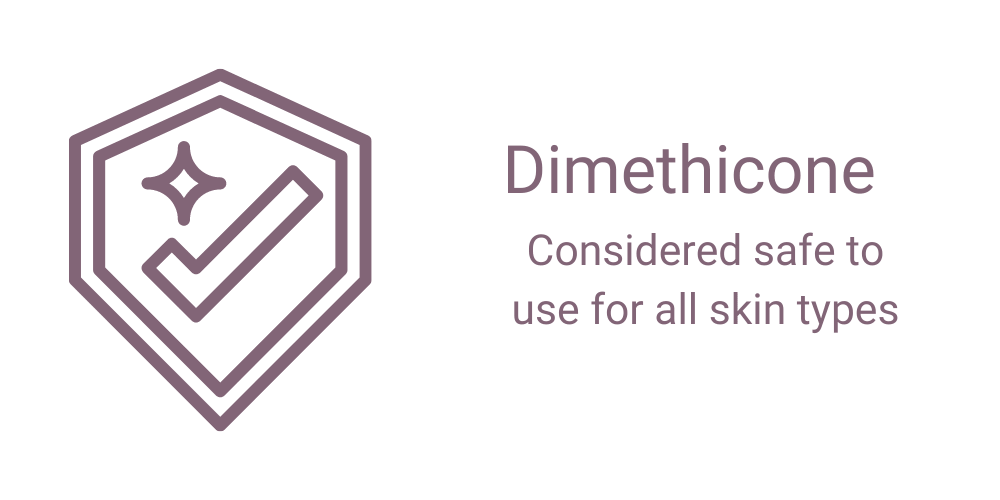
Safety for Skin
The Cosmetic Ingredient Review Expert Panel considers dimethicone safe to use in cosmetics based on current practices and concentration. This analysis also found that dimethicone did not disturb the skin barrier and likely cannot penetrate it. It also did not irritate or sensitize the skin.
Safety for Hair
But is dimethicone bad for hair? It’s considered safe to use for hair as well. Dimethicone is not toxic and it doesn’t strip or damage the hair. However, buildup can occur without proper washing.
Safety for Environment
Okay so dimethicone is safe for hair and the skin but what about the environment? Aren’t silicones bad for the earth? One analysis from 1998 didn’t find any evidence that silicones such as dimethicone had harmed the environment. It degrades into inorganic constituents, carbon dioxide, silicic acid, and water.
Another study from CES found that silicone ingredients required 9 times fewer emissions than non-silicone ingredients. The benefits are most recognized in the automotive, construction, and solar energy industries. But these benefits can apply to the beauty industry as well.
Dimethiconol vs. Dimethicone
These two silicones are often confused for the same ingredient. While these silicones share many of the same characteristics they are different ingredients. The difference is that two chain-end methyl groups in dimethicone are replaced by hydroxyl (-OH) group. The result of this change is dimethiconol.
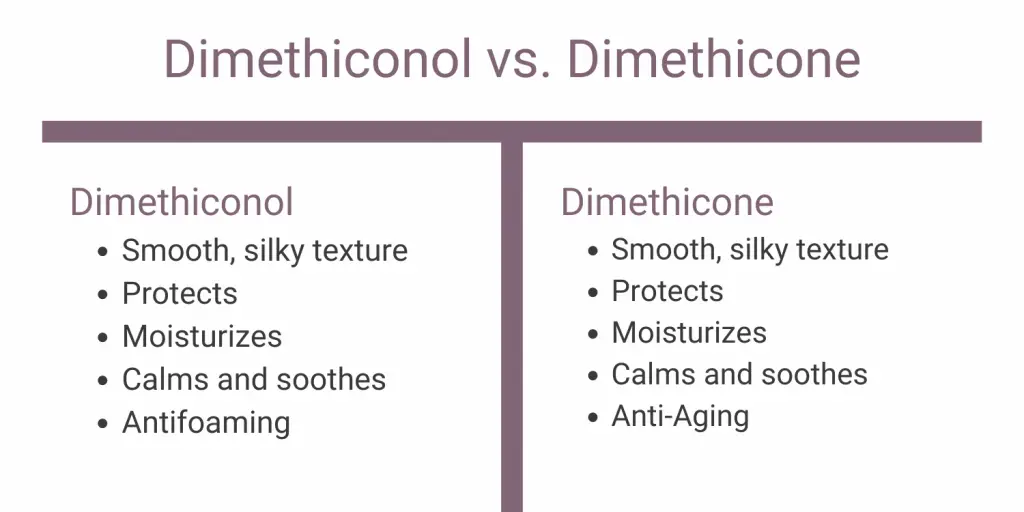
Dimethicone and dimethiconol are both useful in skincare and haircare formulations. They offer a smooth, silky texture that makes the product experience more enjoyable. They’re both have film-forming properties and can protect hair and skin.
Dimethiconol is a hydroxylated silicone oil that acts as an emollient, antifoaming agent, and moisturizer. It’s also referred to as a silicone gum.
Dimethicone Alternatives
Silicone ingredients such as dimethicone are low-cost to make, safe to use, and effective. But they aren’t for everyone. If that’s you, don’t fret. There are great naturally derived ingredients that are great alternatives to dimethicone.
Instead, look for some of the following ingredients that will offer a nice smooth texture.
Coco-Caprylate/Caprate
This is a natural-based emollient that improves product spreadability. It’s a wax ester made of C12-C18 coconut fatty alcohol and a blend of fatty acids. Coco-Caprylate/Caprate is a great option to achieve a smooth silky texture without using silicone oils.
It provides a similar texture as dimethicone and cyclomethicone.
Butylene Glycol Dicaprylate/Dicaprate
This is an emollient made from 1,3-BUTANEDIOL and fatty acids derived from coconut oil. It delivers excellent spreadability benefits and has a low irritation potential.
Butylene Glycol Dicaprylate/Dicaprate is another naturally derived oil that can substitute dimethicone.
Coconut Alkanes
These are naturally-derived kinds of paraffin that offer hydrating, emulsifying, and spreadability benefits. Coconut Alkanes are like a concentrated form of coconut oil.
While this ingredient sounds appealing, Coconut Alkanes have a comedogenic rating of 4-5. This high score means it is very likely to clog pores. It can be an alternative to silicone ingredients but it may leave you with clogged pores instead.
LexFeel N Series
Inolex developed a series of 100% natural and sustainable emollients that provide a product texture similar to dimethicone and cyclomethicone.
The LexFeel N Series improves skin feel, reduces greasiness, and enhances shine (in haircare products). You’ll find these ingredients under the INCI name Diheptyl Succinate (and) Capryloyl Glycerin/Sebacic Acid Copolymer.
Common Variations of Dimethicone
The following ingredients are variations, types, and similar ingredients to dimethicone. These are some common ones that you’ll find in the product ingredient list.
- Dimethicone copolyol – This is a general term used for a group of polymers made from dimethicone and polyoxyethylene.
- Dimethiconol – Hydroxylated silicone oil with similar properties as dimethicone.
- Dimethicone peg-7 phosphate – This is a partial ester of phosphoric acid and a derivative of dimethicone.
- Phenyl dimethicone – Used as an anti-foaming and skin conditioning agent.
- Dimethicone/Vinyl Dimethicone Crosspolymer – This is a copolymer of dimethylpolysiloxane crosslinked with vinyl dimethylpolysiloxane.
- Lauryl PEG-9 Polydimethylsiloxyethyl Dimethicone – This is a silicone polymer with multiple uses in cosmetic, skin, and hair care formulations.
- Vinyl Dimethicone/Methicone Silsesquioxane Crosspolymer – This is a blend of silicone polymers that enhance texture and thicken formulations.
- PEG/PPG-18/18 Dimethicone – The numbers associated with this ingredient are the number of repeat units of PEG and PPG.
- Acrylates/Dimethicone Copolymer – This copolymer has properties of both acrylic resin and silicone.
- Caprylyl Dimethicone Ethoxy Glucoside – This ingredient is created from a reaction of caprylyl dimethicone and a glucose polymer.
- Dimethicone/Vinyltrimethylsiloxysilicate Crosspolymer – This is a copolymer common in moisturizing lotions and creams.
- Simethicone – This is a mixture of dimethicone and silica gel.
Frequently Asked Questions
Find answers to some of the most frequently asked questions about dimethicone.
Related Articles You Might Like:

